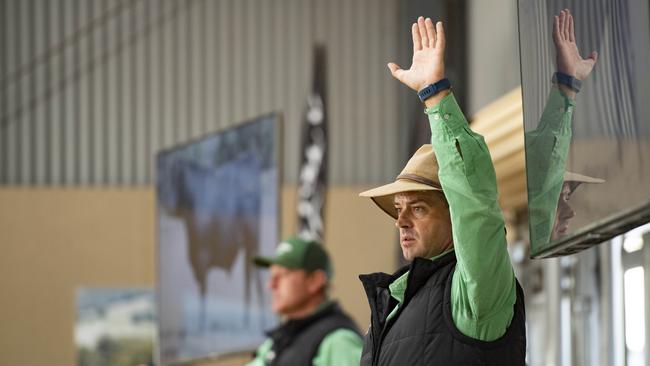Spring bull prices: Time to stock up despite fall in commercial rates
Southern bull vendors hope the positive signs from northern sales will translate to a solid spring selling season.
Southern bull vendors hope the positive signs in northern sales will translate to a solid spring selling season.
While commercial values have suffered in the past 12 months and the benchmark Eastern Young Cattle Indicator is tracking at about half the level it was a year ago, the longer-term positive prospects for Australia’s beef industry remain strong.
And it is essential to consider this when drawing up bull-buying budgets, according to industry leaders who said it was important to continue to buy quality genetics.
Angus Australia chief executive Scott Wright said he had been pleasantly surprised at the strength of the northern NSW sales.
“Obviously, there is some variation however, overall the market for Angus bulls has held at a level higher than falls experienced by commercial prices,” Mr Wright said.
“I think that this demonstrates the value of genetic improvement to improving commercial profitability.”
Some sales had recorded less than 100 per cent clearances, and he said this is something his members would be watching closely.

But Mr Wright said the basis was there for strong sales as the market moved south.
“Better seasonal conditions in southern NSW and Victoria will assist those markets,” he said. “Market rates for bulls that do come back have given some producers an opportunity to get higher quality genetics at a more reasonable price and perhaps to take home a few more bulls.”
Mr Wright said breeders who had already held sales were “pleasantly surprised” with how the market was holding.
“It shows that good breeding is reaping the rewards,” he said.
Herefords Australia chief executive Michael Crowley said buyers in northern NSW sales had found “value for money” across the northern bull selling season.
But he said value for money did not mean bulls were cheap.
“It is simply the cost: benefit equation, and Hereford genetics are delivering,” Mr Crowley said.
“The quality of cattle has been fantastic, and the genetics on offer has meant buyers have been able to take the opportunity to secure bulls that will take their breeding operations forward. “Average prices are back on last year’s record highs, however they have been firm to stronger than expected given the current cattle market.”
Mr Crowley said buying bulls for breeding programs was a long-term investment and had a long-term impact.
“We have also seen strong competition from studs looking for the next game-changing sire,” Mr Crowley said.
But more broadly, clearance rates, particularly for established on-farm sales, had mostly been strong.
“This highlights demand for bulls is still there and a trend I hope continues to extend through the rest of the bull selling season,” he said.
“With many producers across the country back running at full or close to full carrying capacity, it is a time where attention to quality becomes very important.
“Quality commercial cattle are making more money and as a result, sire selection that improves the quality outcome at value for money is a great opportunity for commercial buyers.
“At the same time, seedstock producers are offering bulls that deliver fertility, longevity, productivity and carcass quality which aligns with commercial requirements.”




